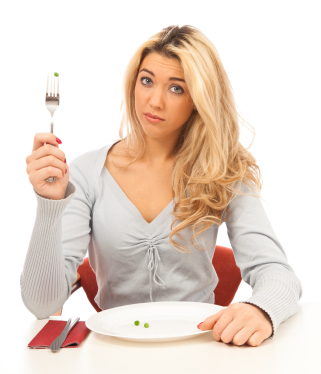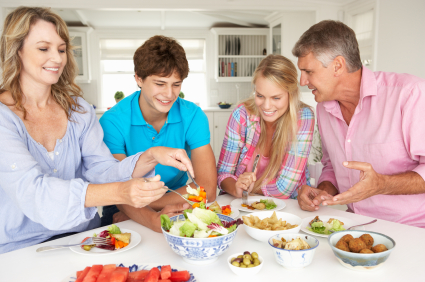Today’s article comes from deep within my heart.
It’s a brand new year and for many people a new year means fresh new goals and/or resolutions. If your goal is to lose weight, it can be really tempting to try the latest fad diet that the fitness or diet industry is promoting. It’s a normal human response to be intrigued by all the marketing that these industries roll out in January… especially if you’ve gained a few pounds over the holidays.
Before you jump on board and commit to a new diet, it’s important you know that temporary, restrictive diets have a 95% failure rate and can do more harm than good.
Have you ever suffered through the physical and emotional torment of the latest fad diet simply to find yourself unsuccessful and frustrated?
Or, maybe you lost a bunch of weight only to gain it back again. Even worse, you gained back more than you lost.
You are not alone. As a personal trainer I have seen and even personally experienced so much physical and psychological damage from dieting, it makes me want to scream!
Some of the reasons diets fail you are:
They slow down your metabolism
They cause you to store fat, not burn it
They’re unsustainable for most people’s lifestyle
When you stop starving yourself and go back to a normal calorie-consumption, you WILL gain weight
Lack of energy due to being hungry
Some diets ask you to eliminate entire food groups and key nutrients
They can cause binge eating
They can cause stress which is known to cause belly fat due to hormonal changes in the body
Look, I get it. You want to get thinner and you want it now. Most of us do not want to wait the amount of time it takes to lose weight that statistically stays off for life. The diet industry is counting on that and the marketing is very convincing!
Losing weight and keeping it off for good without dieting starts with a change in mindset. The mindset that you are going to switch to healthy eating. Eating for health and dieting to lose weight do not always look the same. Things like portion control, cutting back the foods and or liquids that you know are excessive, avoiding overly processed foods, and meal planning are all considered healthy eating, not starvation diets or skipping meals entirely.
HERE ARE SIX TIPS THAT WILL HELP YOU LOSE WEIGHT WITHOUT DIETING
1) You need to eat. It absolutely amazes me that there are still diets out on the market today that recommend dangerously low calorie meal plans when the science says otherwise. Your body will get really good at storing what it doesn’t get enough of. For example, if you eliminate fat from your diet, your body will not want to burn fat. It will want to store fat. Sound nutritional research tells us that you need to eat fat in order to burn fat. I am a firm believer that the low fat and low carb craze has contributed heavily to the obesity crisis in the United States.
Instead of restricting what you eat, you’ll find more success when you focus on a balanced diet that is centered around whole foods. A balanced diet includes carbohydrates, proteins, fruits & vegetables, healthy fats, and water. Any diet that cuts one of these important nutrients out should be avoided.
2) Exercise almost every day. Do your best to exercise six days per week. Try an interval workout 2-3 times per week and alternate with more moderate activity on the rest of the days.
Choose a fun activity on your off day like a moderate hike, cross country skiing, swimming, or taking your kids or your dog to the park.
If exercising six days per week seems overwhelming, start with 20 minutes per day 2-3 days per week . You’ll still get better results than doing nothing at all.
3) Eat in. This is the biggest tip I can give you. Cook at home for the next 30 days and bring your lunch. Use light recipes from sources like EatingWell, Cooking Light, and Health magazine.
4) Cut back on liquid calories. Try substituting alcohol, sodas, and other higher calorie drinks with water. Try adding lemon or cucumber for some variation.
If cutting out liquid calories sounds extreme, take a more moderate approach and cut down to half or even a quarter of what you usually drink. You can always go back to your normal consumption if you want to. This is about figuring out what works for you personally.
5) Cut back on dessert. Desserts are usually loaded with calories. If you have a sweet tooth, try substituting with fruit or one piece of dark chocolate.
6) Be authentically you. It’s really important that you pay close attention to what’s most important to you. Not everyone wants to be or was designed to look like the models on the cover of fitness magazines. If challenging yourself to reach an elite athlete status is fun for you and you can achieve it in a healthy way, then by all means go for it! However, if you know in your heart of hearts you’d just like to live a long healthy life, fit in your jeans, and have the stamina to do the activities you enjoy without a whole lot of restrictions in your life, then general health and fitness is for you so please don’t beat yourself up because you’re not “doing whatever it takes” to look like a fitness model.
I recommend you try my suggestions above for the next 30 days and stay consistent. However, If this all seems a bit overwhelming, pick as many things from above that you can realistically implement right away and stay consistent. Diet and exercise are very personal which is why a canned approach rarely works. We all have different lives, different goals, and different needs. 🙂
To your long term health and fitness!
Jennifer



